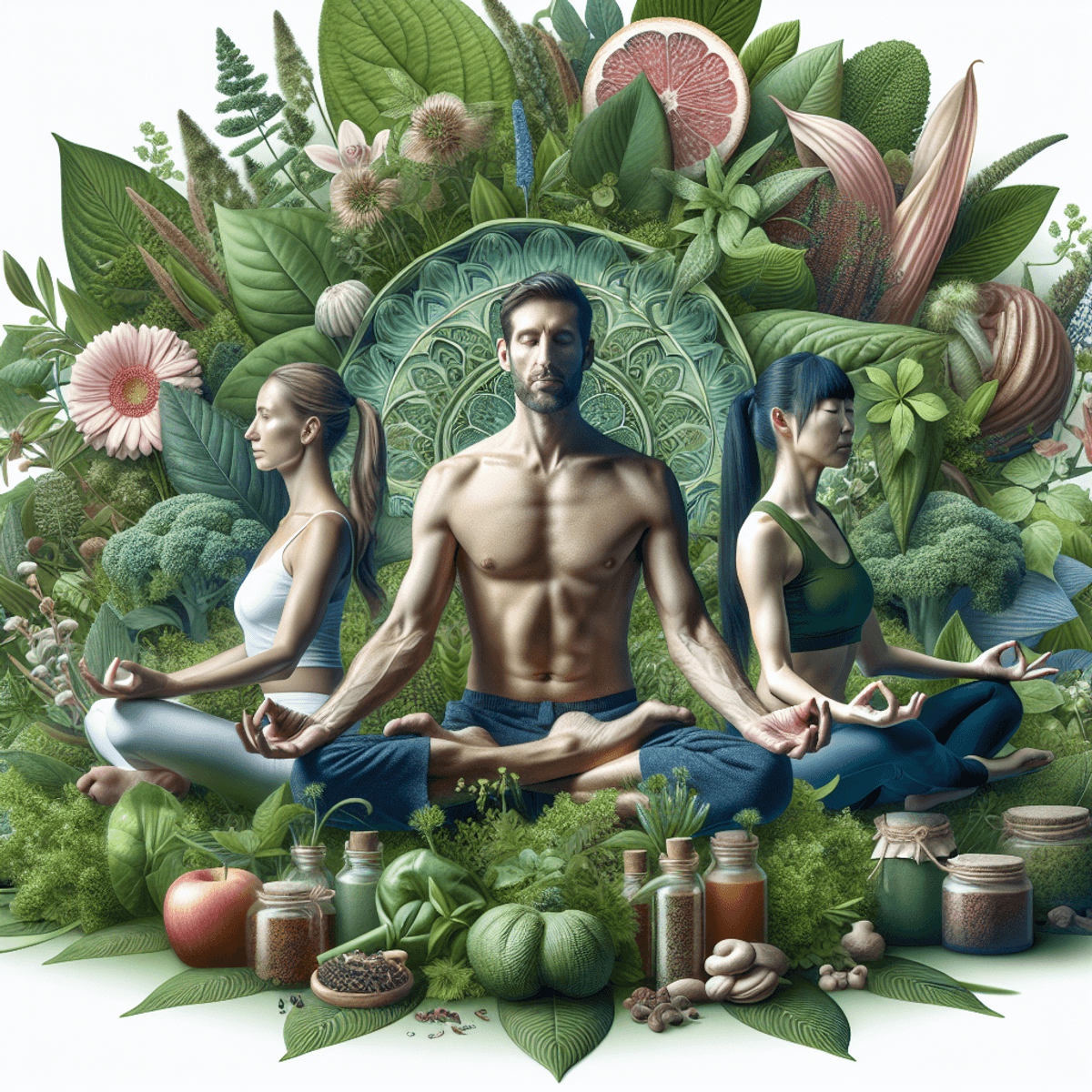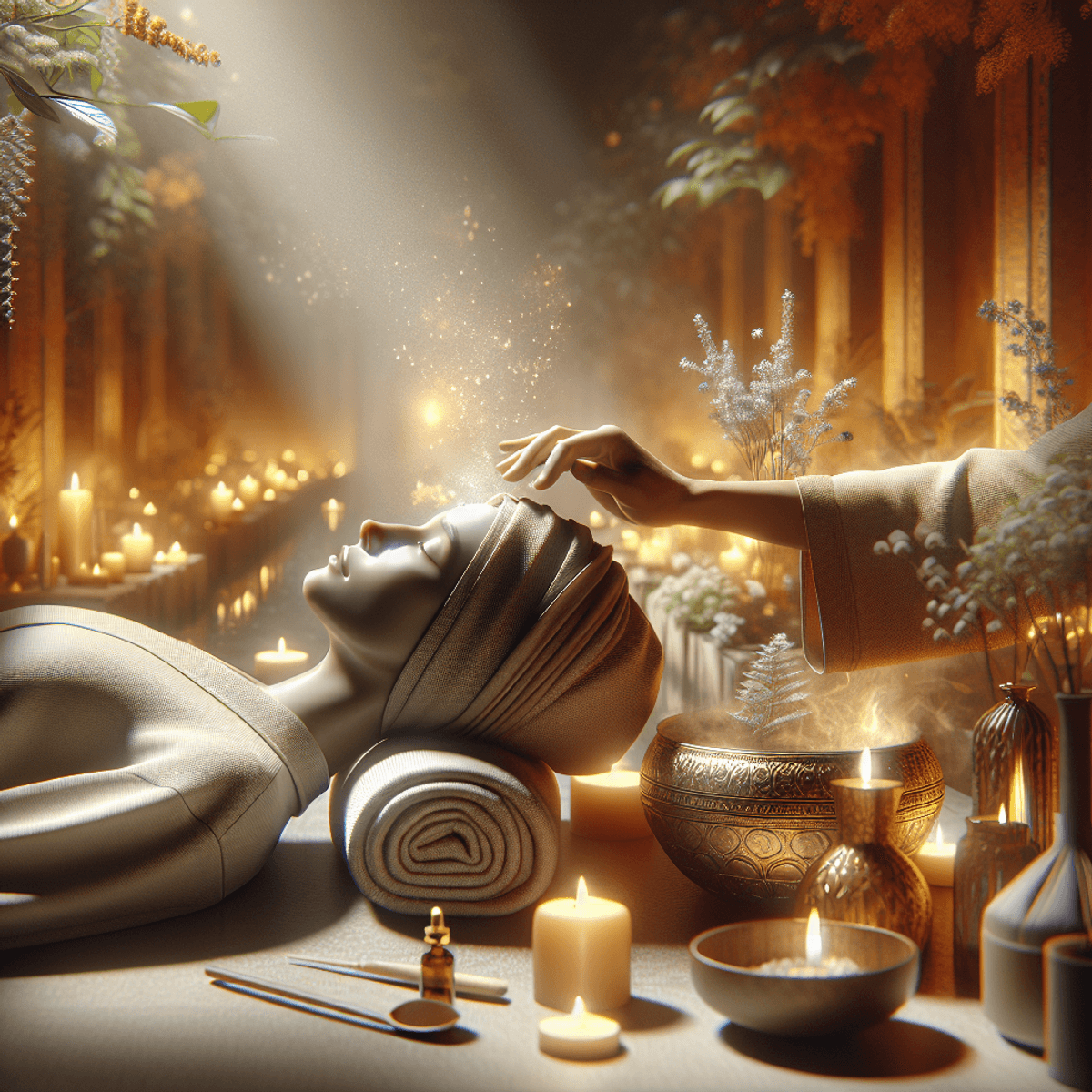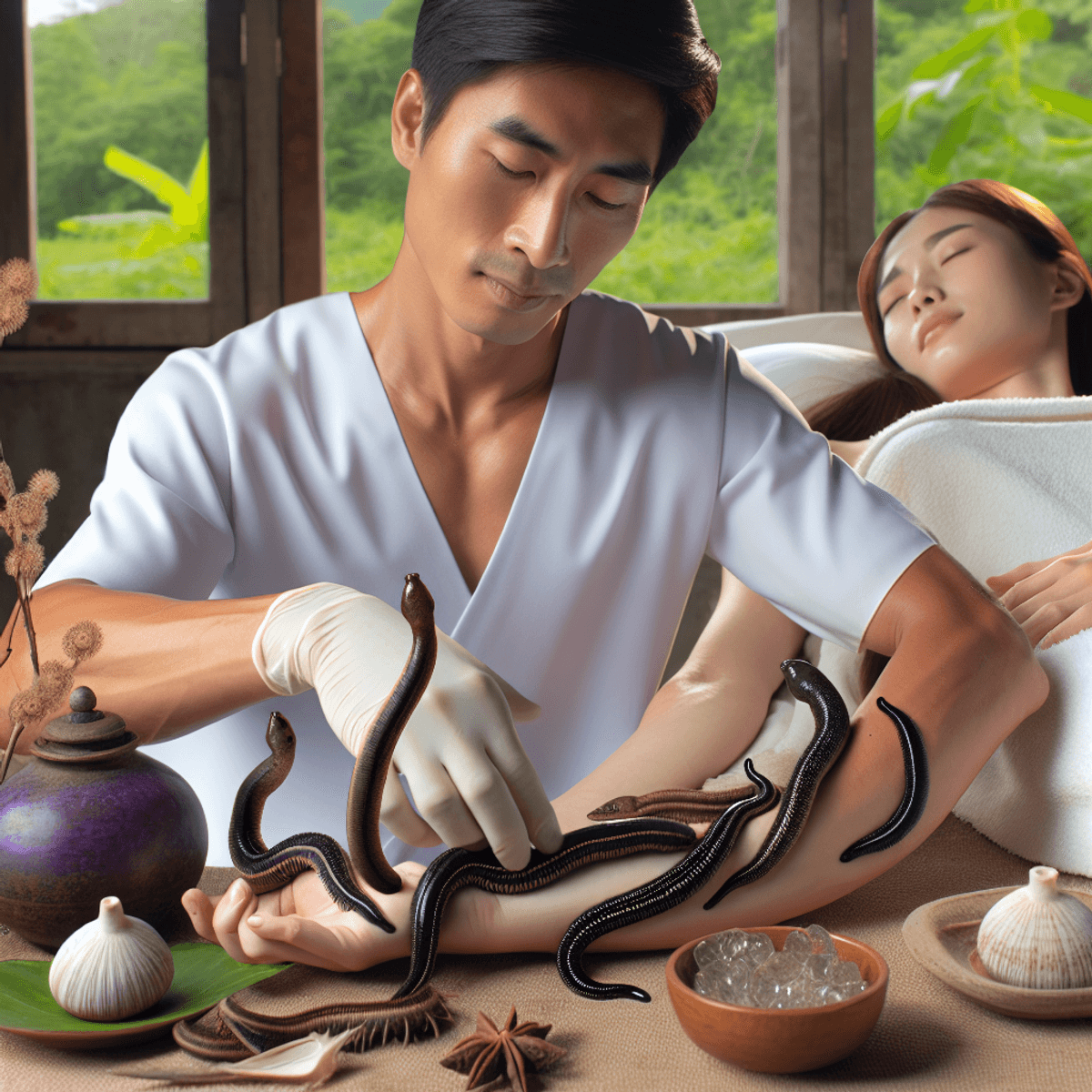Services
Dashakarma Therapy
Introduction
Dashakarma is a profound Ayurvedic therapy designed to achieve harmony in the body, mind, and consciousness. Rooted in ancient wisdom, this therapeutic approach is not just a treatment but a way of life that promotes health and longevity. By focusing on both purification and rejuvenation, Dashakarma supports the holistic well-being of an individual.
Key methods employed in Dashakarma therapy include various purification techniques aimed at detoxifying the body. These methods pave the way for effective healing by ensuring that the body is free from toxins before other treatments are administered.
- Abhyanga: A soothing full-body massage with herbal oils.
- Shirodhara: A unique technique involving a steady stream of warm oil poured onto the forehead.
- Pizhichil: A gentle application of lukewarm medicated oil over the body.
- Potala Massage: Utilizes heated herbal pouches for therapeutic effects.
- Vamana: A process inducing vomiting to expel toxins from the upper body.
This holistic therapy not only cleanses but also revitalizes, making it essential for anyone seeking balance and vitality through Ayurveda. Embracing Dashakarma can lead to improved digestion, enhanced immunity, stress relief, and rejuvenation. It’s recommended particularly when there’s a significant imbalance in doshas or high accumulation of Ama (toxins).
Understanding the Core Principles of Dashakarma Therapy
1. Abhyanga: The Healing Art of Oil Massage
In Ayurveda, Abhyanga is a key part of Dashakarma therapy. This traditional oil massage isn’t just a relaxing treat but a deep healing ritual that targets the doshas—Vata, Pitta, and Kapha—to balance body and mind.
Exploring Abhyanga’s Benefits
- Detoxification: The main strength of Abhyanga is its ability to detoxify. Warm herbal oils are applied during the massage, penetrating deep into tissues and loosening Ama (toxins) that have settled inside. By encouraging the release of these impurities, Abhyanga prepares the body for effective cleansing.
- Improved Circulation: Regular sessions improve blood circulation throughout the body. The rhythmic movements used during an Abhyanga session boost blood flow, which in turn supplies oxygen to cells and tissues. This vital process is essential for maintaining good health and longevity.
- Rejuvenation and Well-being: Besides its detoxifying properties, Abhyanga has rejuvenating effects on both the physical and mental levels. The nourishing oils used in this therapy are rich in antioxidants and nutrients that refresh skin and tissues. Moreover, the calming nature of the massage soothes the nervous system, reducing stress and anxiety while promoting mental clarity and awareness.
How Regular Abhyanga Sessions Benefit You
Engaging in regular Abhyanga sessions can be transformative. Here’s how:
- Release Toxins: As herbal oils are massaged into your skin, they draw out toxins from deeper layers, aiding in their elimination from your system.
- Enhance Circulation: Improved blood flow not only supports physical health but also contributes to enhanced energy levels and vitality.
- Promote Relaxation: The gentle strokes used in Abhyanga trigger the relaxation response, reducing cortisol levels and helping you achieve a balanced state of mind.
- Boost Immunity: By enhancing bodily functions through improved circulation and detoxification, Abhyanga supports a robust immune system capable of warding off illnesses.
- Nourish Skin: The oils used in this therapy moisturize and nourish your skin, leaving it supple and radiant.
A Ritual Rooted in Tradition
The practice of Abhyanga dates back centuries; its significance is deeply embedded within Ayurvedic philosophy.
DAD Ayurveda emphasizes that achieving health and longevity depends on maintaining balance across mind, body, and spirit—a principle that underlies every aspect of Dashakarma therapy.
Abhyanga’s role in maintaining balance cannot be overstated. Whether experienced as part of a comprehensive detoxification regimen or as a standalone treatment for well-being, this full-body massage serves as a reminder that self-care rituals are essential to nurturing one’s holistic health journey.
Incorporating regular Abhyanga sessions into your lifestyle can be a powerful step toward achieving harmony within yourself—a testament to the enduring wisdom of Ayurveda’s ancient traditions.
2. Shirodhara: A Journey to Deep Relaxation and Mental Clarity
Shirodhara, one of the key practices within Dashakarma therapy, offers an immersive experience designed to harmonize your body, mind, and consciousness. This therapeutic technique involves a continuous stream of warm herbal oil gently cascading onto the forehead. This steady flow targets the region often associated with the “third eye,” a vital energy center that plays a crucial role in mental clarity and emotional balance.
Benefits of Shirodhara include:
- Calming the Mind: The rhythmic pouring of oil induces a state of deep relaxation, soothing both the nervous system and mental activity.
- Enhancing Mental Clarity: By focusing on the third eye area, Shirodhara fosters heightened awareness and cognitive function.
- Relieving Stress: The warmth of the oil combined with its gentle application alleviates stress, reducing tension accumulated from daily life.
This practice is highly significant in Dashakarma therapy. It works alongside other detoxification methods like Abhyanga (massage) and fomentation (steam treatment) by addressing mental toxins that can hinder clear thinking. Shirodhara also helps balance Vata, Pitta, and Kapha doshas, preventing issues like anxiety or mental exhaustion.
Adding this therapy to your wellness routine can help you achieve health and longevity by promoting inner peace. When combined with full-body massages and other rejuvenating techniques, Shirodhara supports your journey towards overall well-being. Known for its ability to blend physical relaxation with heightened awareness, this unique therapy is a testament to the skillful science of Ayurveda practiced by DAD Ayurveda and similar organizations dedicated to preserving ancient healing traditions.
3. Pizhichil: Rejuvenating Body and Mind with Lukewarm Medicated Oil
Pizhichil is a unique treatment in Dashakarma therapy that combines oil massage and fomentation, essential techniques for detoxification. In this soothing process, warm medicated oil is gently poured over the body while rhythmic strokes are applied. This method not only helps eliminate toxins but also revitalizes both the body and mind.
Why Pizhichil Matters in Ayurveda
In Ayurveda, it’s important to keep the three doshas—Vata, Pitta, and Kapha—in balance for good health and long life. When toxins, known as Ama, build up in the body, they can disturb this balance and cause health problems. Pizhichil is an effective way to address these imbalances by cleansing the body through its special technique.
How Pizhichil Works
- Gentle Pouring Technique: Warm medicated oils are carefully selected based on each person’s dosha type. These oils are then poured over the body in a continuous stream.
- Synchronized Strokes: While pouring the oil, practitioners perform rhythmic massages using coordinated strokes. This ensures that the oils penetrate deeply into tissues, aiding detoxification.
Benefits of Pizhichil Therapy
- Rejuvenation: The therapy enhances tissue rejuvenation, promoting overall well-being.
- Stress Reduction: Warm oil and gentle massage techniques help alleviate stress and tension.
- Enhanced Circulation: The combination of heat and massage boosts circulation, ensuring nutrients reach every part of the body.
Through Pizhichil, individuals experience profound relaxation while simultaneously undergoing deep physical cleansing. This therapy’s significance within Dashakarma highlights its importance as an effective method for detoxification and rejuvenation, aligning perfectly with the objective to achieve balance in body, mind, and consciousness.
4. Potala Massage: Therapeutic Bliss with Heated Herbal Pouches
Potala Massage is a standout technique in Dashakarma therapy, offering profound therapeutic benefits through the use of heated herbal pouches. These pouches are carefully prepared by filling them with a blend of medicinal herbs known for their healing properties. The warmth from the pouches serves multiple purposes:
- Dosha Balancing: The application of heat helps balance the doshas—Vata, Pitta, and Kapha—by penetrating deep into the tissues, aiding in the release of accumulated Ama (toxins).
- Enhanced Detoxification: The heat generated during Potala Massage facilitates the fomentation process, which is integral to Dashakarma’s detoxification methods. This process encourages sweating, furthering the elimination of toxins from the body.
- Rejuvenation and Relaxation: As an extension of oil massage techniques like Abhyanga, Potala Massage offers similar benefits in terms of relaxation and rejuvenation. It enhances circulation and promotes a sense of well-being, supporting overall health and longevity.
This therapy aligns with DAD Ayurveda principles by promoting consciousness and holistic wellness. The integration of heated herbal pouches not only underscores the importance of traditional purification methods but also highlights their effectiveness in achieving balance within the body and mind.
Advanced Detoxification Methods in Dashakarma Therapy
1. Vamana: Purging Toxins from the Upper Body for Optimal Health
In Dashakarma therapy, Vamana is a powerful purification method that focuses on removing toxins from the upper body. This technique aims to restore balance in the body, mind, and consciousness by directly addressing accumulated impurities that may disrupt health and vitality.
The Process of Vamana
Vamana therapy involves inducing therapeutic vomiting to cleanse the upper gastrointestinal tract. It is a meticulously controlled process, guided by an experienced Ayurvedic practitioner. Here’s a step-by-step breakdown:
- Preparation Phase: Before undergoing Vamana, individuals typically undergo pre-treatment procedures such as Snehana (internal and external oleation) and Swedana (fomentation). These practices help loosen toxins within tissues.
- Administration of Emetics: On the day of Vamana, specific emetic medicines are administered on an empty stomach. These are usually derived from natural sources like licorice or calamus root.
- Induction Phase: After ingestion, warm liquids are gradually consumed to facilitate vomiting. The process continues until the desired level of purgation is achieved.
- Post-Treatment Care: Following Vamana, patients rest for several hours and adhere to a specific diet and lifestyle regimen to support recovery.
Benefits of Vamana Therapy
The benefits of Vamana extend beyond detoxification:
- Upper Body Detoxification: By purging toxins from the stomach and respiratory tract, Vamana helps clear congestion and balance excess Kapha dosha.
- Improved Respiratory Health: Conditions such as asthma, sinusitis, and chronic bronchitis can see significant improvements following this treatment.
- Enhanced Digestive Function: By removing excess mucus from the stomach lining, digestive efficiency is restored.
- Mental Clarity: As physical congestion diminishes, so too does mental fog, allowing for enhanced mental clarity and focus.
This technique is particularly beneficial for individuals with Kapha imbalances or those experiencing symptoms like excessive mucus production, lethargy, or heaviness in the chest. However, it requires careful supervision by a qualified Ayurvedic practitioner to ensure safety and effectiveness.
Vamana’s role in Dashakarma emphasizes its importance not just as a detoxification method but also as a pathway to holistic health. Through this ancient practice, one can attain not only physical cleansing but also renewed mental clarity and emotional balance.
2. Virechan: Restoring Digestive Harmony through Herbal Laxatives
Virechan is a key part of the advanced detoxification methods in Dashakarma, focusing on improving digestive health and balance. This process uses specific herbal laxatives to cleanse the intestines, effectively removing toxins that can disrupt digestion.
Benefits of Virechan
Including Virechan in your wellness routine can help maintain optimal digestive function by:
- Eliminating Toxins: The primary goal is to clear out harmful substances from the body’s system, particularly targeting the gastrointestinal tract.
- Balancing Doshas: By focusing on Pitta dosha, Virechan helps rebalance this energy, which controls metabolism and digestion.
- Enhancing Nutrient Absorption: With a detoxified digestive system, your body can better absorb nutrients from food, contributing to improved overall health.
How Virechan Works
The process starts with taking specific herbal preparations designed to induce purging. This step requires expert guidance to ensure it’s tailored to your unique constitution and health needs.
Complementary Techniques
Virechan works well with other Dashakarma techniques such as:
- Vamana (therapeutic vomiting)
- Basti (enema therapy)
- Nasya (nasal therapy)
- Raktamokshan (blood purification)
Each of these techniques contributes uniquely to achieving balance in body, mind, and consciousness.
3. Basti: A Gentle Approach to Colon Cleansing and Overall Well-Being
Basti, a key component of Dashakarma therapy, offers a gentle yet effective method for colon cleansing and overall well-being. This enema therapy goes beyond just physical detoxification—it also plays an important role in balancing the body’s doshas: Vata, Pitta, and Kapha.
The therapeutic benefits of Basti are many:
- Improved Bowel Function: By administering specific herbal mixtures directly into the colon, Basti helps relieve constipation and promotes regular bowel movements.
- Dosha Balancing: Especially effective in calming Vata dosha, Basti helps harmonize bodily functions and improve mental clarity.
- Support for Overall Health: In addition to its digestive benefits, Basti supports the nervous system, boosts immunity, and rejuvenates tissues.
Incorporating Basti into a holistic health routine aligns with Dashakarma’s goal of achieving balance in body, mind, and consciousness. When combined with other advanced detoxification techniques such as Vamana, Virechan, Nasya drops, and Raktamokshan, Basti enhances the purification process. Working with these therapies under the guidance of an experienced Ayurvedic practitioner ensures their effectiveness and safety, leading to a balanced and vibrant life.
4. Nasya: Nurturing Mind and Sinuses with Nasal Drops
Nasya therapy is a vital part of Dashakarma, known for its profound impact on the mind and sinuses. This practice involves the use of Nasya drops, which are herbal oils delivered through the nasal passages. The process starts with a gentle facial massage and steam to prepare the area, followed by the precise application of these therapeutic oils.
The benefits of Nasya therapy go beyond just clearing sinus congestion. As the oils penetrate deep into the nasal membranes, they stimulate brain function, enhance mental clarity, and provide relief from headaches and migraines. This holistic approach not only addresses physical issues but also helps in emotional balance and mental rejuvenation.
Regular sessions of Nasya can be especially helpful for individuals prone to allergies or frequent colds as it helps maintain respiratory health. By incorporating specific herbs known for their anti-inflammatory and decongestant properties, Nasya serves as an effective method of purification within the broader context of Dashakarma’s detoxification techniques.
Understanding these practices like Vamana (therapeutic vomiting), Virechan (bowel cleansing), Basti (enema therapy), and Raktamokshan (blood purification) enriches one’s appreciation of how Dashakarma works to achieve balance in body, mind, and consciousness through varied methods of purification.
5. Raktamokshan: Revitalizing Skin Health from Within
Raktamokshan is a vital part of Dashakarma, focusing on purification and detoxification through blood cleansing. This therapy is essential for treating various skin conditions by targeting stagnant blood channels and purifying them. Different techniques are used, such as leech therapy and venesection, to effectively remove impurities.
Techniques Used in Raktamokshan
- Leech Therapy: Medicinal leeches are used to extract impure blood, reducing inflammation and promoting healing. It’s especially helpful for conditions like eczema, psoriasis, and other chronic skin disorders.
- Venesection: A controlled incision is made to draw out excess or vitiated blood, which can help relieve symptoms associated with skin ailments.
How Raktamokshan Works
Raktamokshan addresses the root cause of many skin issues—impurities in the bloodstream—offering a comprehensive approach to improving skin health. By focusing on blood purification, this therapy not only helps resolve dermatological problems but also contributes to overall systemic balance. This aligns with Dashakarma’s holistic philosophy of achieving harmony in body, mind, and consciousness.
Complementary Treatments in Dashakarma
Other treatments in Dashakarma work together with Raktamokshan to detoxify different bodily systems:
- Vamana (therapeutic vomiting) helps expel toxins from the upper body.
- Virechan (bowel cleansing) targets digestive cleansing through herbal laxatives.
- Basti (enema therapy) promotes colon health via enema administration.
- Nasya (nasal therapy) clears nasal passages and nourishes brain function with drops.
These advanced detoxification methods highlight Dashakarma’s ability for thorough purification and rejuvenation.
The Holistic Benefits of Embracing Dashakarma Therapy for Balance and Vitality
Engaging with Dashakarma therapy isn’t just about detoxifying your body; it’s a comprehensive approach to achieving balance in the body, mind, and consciousness. By leveraging the Five Therapies of Dashakarma, individuals can experience a myriad of physical and mental health benefits that resonate through various life stages.
Key Physical and Mental Health Benefits
1. Improved Digestion
Regular practice of therapies like Virechana and Basti helps eliminate toxins from the digestive tract, leading to enhanced digestive health. This results in better nutrient absorption and reduced gastrointestinal issues.
2. Enhanced Immunity
Consistent cleansing and rejuvenation practices fortify the immune system. By purging toxins and balancing doshas, the body’s natural defenses are strengthened, making it more resilient against diseases.
3. Rejuvenation and Increased Energy Levels
Treatments such as Abhyanga oil massage and Shirodhara not only revitalize tissues but also boost energy levels. This rejuvenation supports vitality and longevity, enhancing quality of life.
Discover Disha Arogya Dham
For those seeking authentic Ayurvedic treatments, Disha Arogya Dham offers specialized programs tailored to individual needs. With a focus on delivering genuine Ayurvedic experiences, this wellness center provides an ideal environment to explore Dashakarma’s full potential. Each program is designed to address specific health concerns while promoting overall well-being.
A Call to Explore Transformative Healing Modalities
If you’re considering embracing these transformative healing modalities, professional guidance is crucial. An experienced Ayurvedic practitioner ensures that each therapy is customized for your unique constitution and health requirements. This personalized approach maximizes benefits while minimizing risks.
Dashakarma is more than just a set of therapeutic practices—it’s a pathway to achieving profound balance in every aspect of life. Its holistic approach not only targets physical ailments but also nurtures mental clarity and emotional stability. Whether you aim to maintain general health or address specific issues, integrating Dashakarma into your wellness routine can lead to a harmonious balance between body, mind, and consciousness.
FAQs (Frequently Asked Questions)
What is Dashakarma?
Dashakarma is an Ayurvedic therapy aimed at achieving balance in body, mind, and consciousness. It incorporates various methods of purification and rejuvenation to promote overall health and well-being.
What are the key techniques used in Dashakarma therapy?
Dashakarma therapy utilizes several key techniques including Abhyanga (oil massage), Shirodhara (pouring warm herbal oil on the forehead), Pizhichil (pouring lukewarm medicated oil over the body), and Potala Massage (using heated herbal pouches). Additionally, advanced detoxification methods such as Vamana, Virechan, Basti, Nasya, and Raktamokshan are employed.
What are the benefits of Abhyanga in Dashakarma therapy?
Abhyanga, or oil massage, is a fundamental practice in Dashakarma therapy that helps release toxins, improve circulation, and promote overall well-being. Regular sessions can enhance relaxation and rejuvenation.
How does Shirodhara contribute to mental clarity?
Shirodhara involves pouring a steady stream of warm herbal oil onto the forehead, which aids in calming the mind, enhancing mental clarity, and relieving stress. This unique therapy promotes deep relaxation and emotional balance.
What is the process of Vamana therapy?
Vamana therapy is a detoxification technique that promotes upper body cleansing through therapeutic vomiting. It helps eliminate accumulated toxins from the upper digestive tract to restore health.
Can you explain the role of doshas in Dashakarma therapy?
In Dashakarma therapy, doshas (Vata, Pitta, Kapha) represent different energies that govern bodily functions. Understanding these doshas along with Ama (toxins) is essential for tailoring therapies to maintain health and achieve balance within an individual.
Discover more from DAD Ayurveda
Subscribe to get the latest posts sent to your email.








